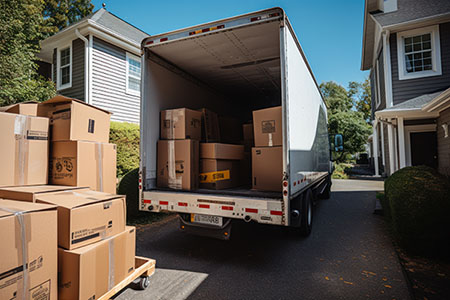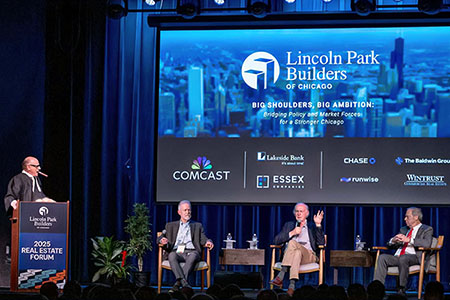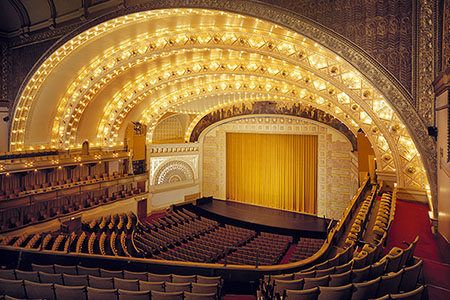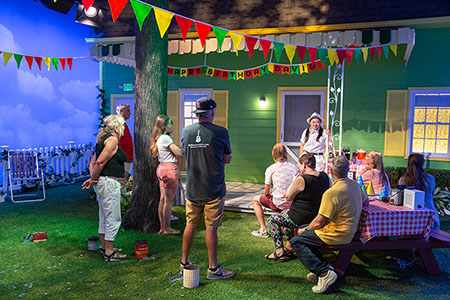
(Above) Tiny house and lot in Atlanta. Photo by Don DeBat. One tiny house makes sense for a first-time home buyer, but what about a whole neighborhood of tiny houses? Could this help make Chicago more environmentally-friendly, put underutilized land to work, and end homelessness? Mar. 24, 2018 – Tiny-house living could provide the path to homeownership for Millennials, a 45-million-person population of potential first-time home buyers, housing advocates say. Most Millennials – those young Americans age 25 to 34 years of age – are renting tiny apartments and not getting married, starting families, and forming traditional households fast enough. What’s the problem? A major part of the dilemma is the soaring price of new homes and condominiums, which skyrocketed 29 percent between 2000 and 2016, according to the National Association of Home Builders. This problem has been acerbated by the lag in United States per capita income, which only has grown a pathetic one percent during the same period.
For example, a 487-square-foot studio at Eugenie Terrace, 1730 North Clark Street, goes for $1,818 to $1,863 a month, plus utilities and parking. At Presidential Towers, 555 West Madison Street in the Loop, monthly rent on a 471-square-foot studio ranges from $1,375 to $1,430, plus utilities and parking. However, Benson noted that Millennials who choose to buy a condominium would be surprised at today’s resale prices on studios – the tiny high-rise choice. Here are some recent studio resale transactions...
So, what are the options for fulfilling the American Dream for thrifty, ecologically-conscious Millennials seeking a simpler, more affordable life in Chicago? One viable option could be tiny-house living, experts say. Typically, tiny houses are affordable, economically accessible, sustainable, and ecologically friendly, advocates say. Downsizing of space, reducing the carbon footprint, use of recycled rainwater, and solar power can lead to living a simpler, less burdensome lifestyle off the grid. The average cost for a do-it-yourself-built tiny house is about $23,000, but retail cost typically is $75,000 or more. If a 500-square-foot tiny-house sold for an affordable $100,000 – a fraction of the cost of a North Side Chicago resale studio condo – the monthly mortgage payment would be a little over a $1 per square foot. For example, if the buyer of a $100,000 tiny house placed a 20 percent down payment and obtained a 30-year fixed-rate mortgage at 4.5 percent, the monthly payment for principal, interest, real estate taxes, and insurance would only be $540 a month. Water, sewer, garbage fees, plus gas and electric utilities would only add about $150 to the total, so the monthly tiny house nut could be under $700 – about half the rent of a typical studio apartment. Land for tiny houses could be south of Loop The question is where do we get the land to build thousands of tiny houses? With Mayor Rahm Emanuel’s reelection campaign already on the horizon, this writer is hoping a light bulb will soon go on at City Hall. Although Rahm has been selling South Side vacant lots for $1 to neighboring property owners, he must be wondering what the city should do with the vast real estate wilderness on Chicago’s South Side that is not in the backyard of President Barack Obama’s namesake future library. The City of Chicago estimates there currently are about 10,000 vacant lots on the South Side – most of them stretching from McCormick Place around 22nd Street to Hyde Park and from Lake Michigan deep into Washington Park, Englewood, and West Englewood. Back in 2011, the late William Lavicka, an affordable housing advocate and leading city renovation specialist, estimated that the Chicago land bank contained 40,000 to 50,000 lots when you consider both city-owned and privately-owned vacant property on the South Side and West Side. If some of this property could somehow be resurrected from delinquency and put back on the active real estate tax rolls for the construction of 10,000 tiny houses, millions of dollars in new revenue could be injected into the sagging city budget. Because a typical 15-by-30-foot tiny house doesn’t require much space, up to three units could be erected on concrete slabs or on wheels on a subdivided 25-by-125-foot city lot with some zoning and building code variations. Existing neighborhood utility hookups likely would be nearby.
Ultimately, mini-neighborhoods of tiny houses could be privately developed to provide eco-friendly housing for first-time buyers, and suburbanites seeking in-town digs for a weekend in our world-class city. Yes, permanent tiny homes even could be provided for Chicago’s poor and homeless residents, who always seem to be last on the list when it comes to finding affordable housing in a safe environment.
|








 Previous story:
Previous story: 








